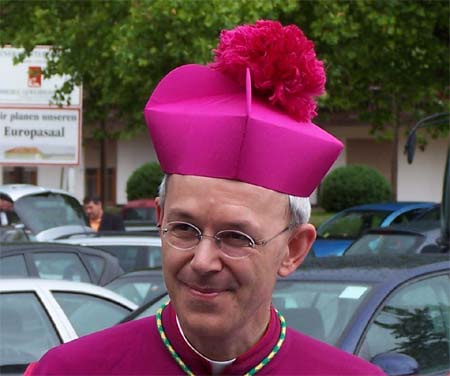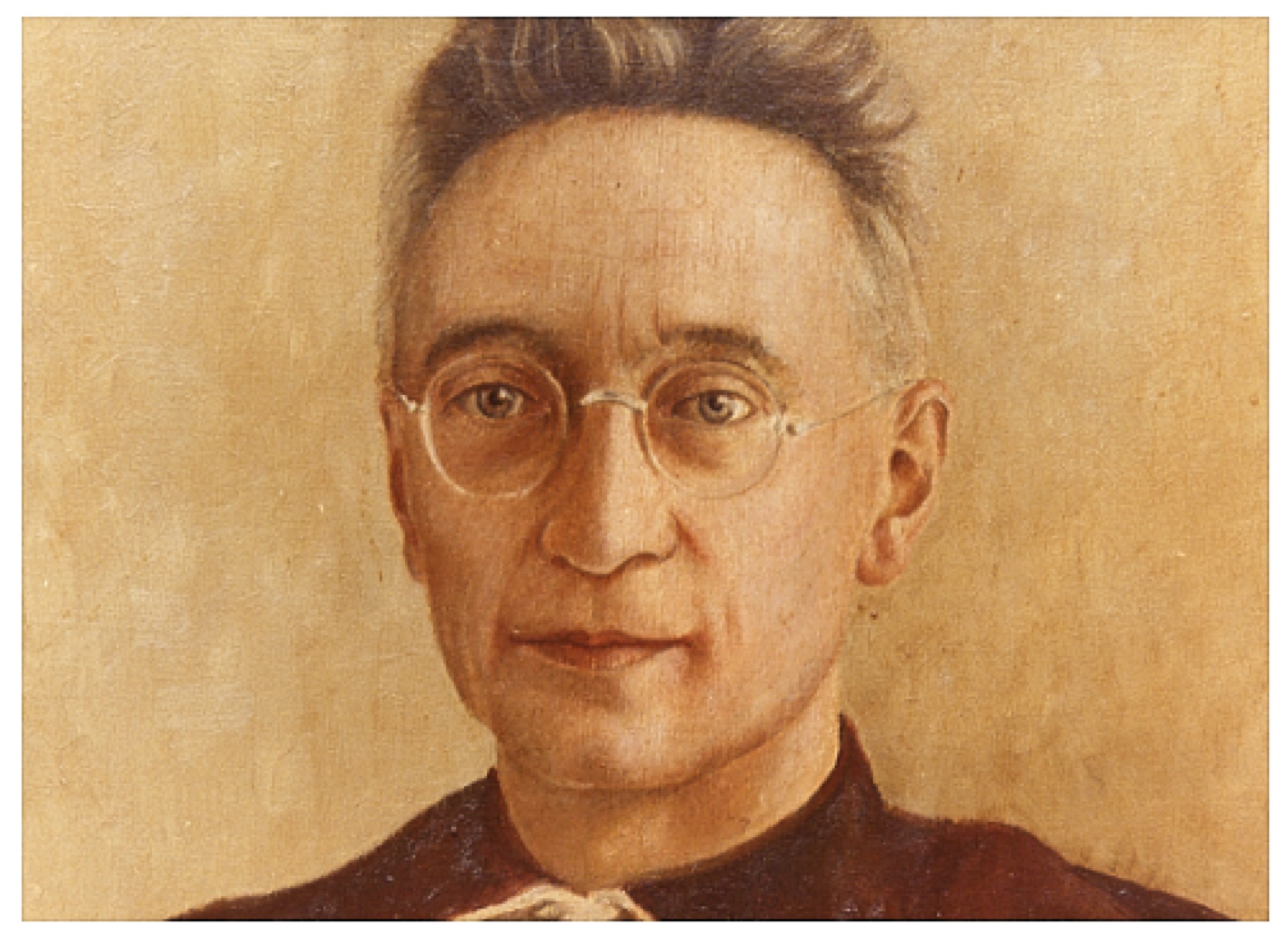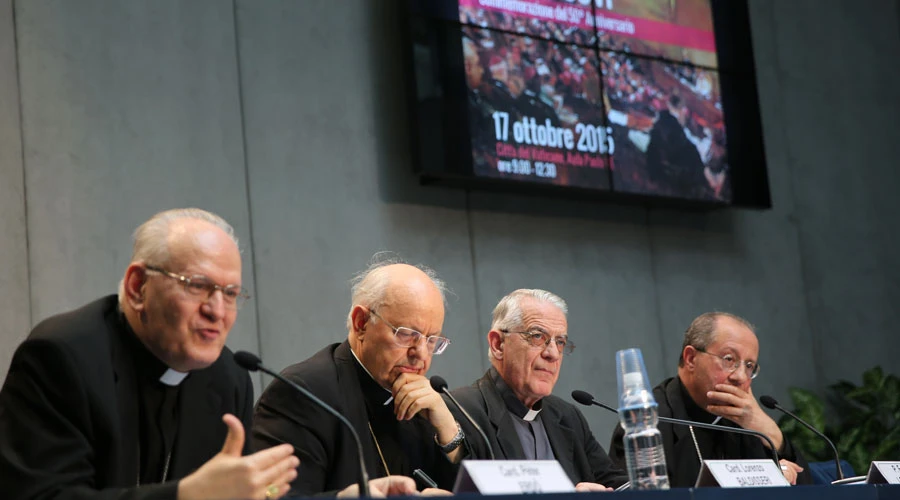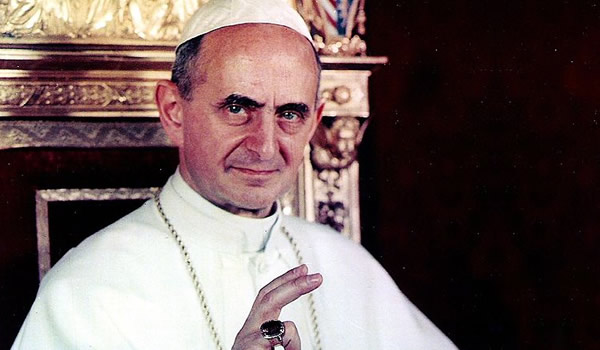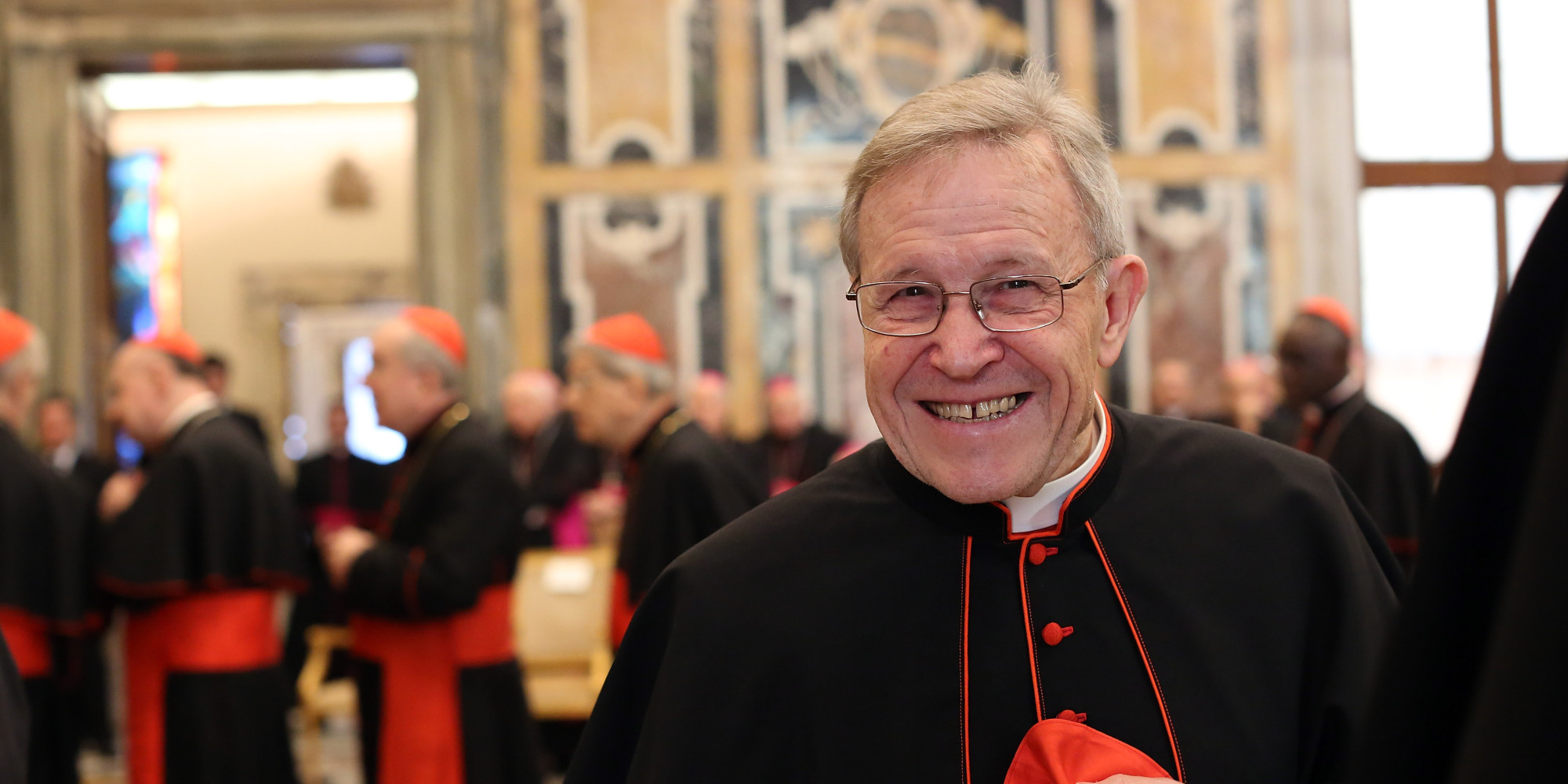There has recently been published the
Instrumentum Laboris or working document for the second session of the Synod on the Family due to take place in October of this year. At the end of the 2014 session a report on the first 2014 session was published as the
Relatio Synodi.
As I have already explained this
Relatio Synodi was a radical revision of an earlier document called the
Relatio post disceptationem which was a very unsatisfactory document with many doubtful statements in the light of the teaching of the Church. The
Relatio Synodi corrected most of the erroneous statements and each clause was voted on. With the exception of three clauses, these corrections received an overwhelming majority from the delegates. However, even though these three clauses had been voted down they were left in at the request of Pope Francis. The
Relatio Synodi was then sent out to the Synods of the Eastern Catholic Churches
sui iuris, the episcopal conferences, the dicasteries of the Roman Curia and the Union of Superiors General, requesting comments on various aspects.
The
Instrumentum Laboris reprints the
Relatio Synodi in its entirety but with added clauses interpolated. What was 61 clauses has now become 147 clauses so there are an additional 86 new clauses. An introduction explains that these new clauses are a resume of the responses from the above list of Synods etc, but also observations from we are told:
Various members of the particular churches, organizations, lay groups and other Church entities made important recommendations, universities, academic institutions, research centres and individual scholars.
The problem is there is absolutely no indication of where any of the new clauses actually came from.
We are just told
“Many highlight...”, “Many are concerned ...”, “Many recommend...”. This is important in respect of certain controversial clauses, which I will come to, in view of the fact that comments could have come from just about anyone such as non-Catholics or the
Shadow Synod held in Rome in May by dissenters from Germany and elsewhere.
There are some good additions though! New clauses 18 onwards have some good material on old age and disability but curiously no mention is made of euthanasia until the very end at new clause 141 where over-aggressive treatments and euthanasia are said to be things to be avoided; one can imagine people saying “Yes, but one cannot always avoid them”.
A new clause 34 is a wholly inadequate comment on the Bio-ethical challenge by failing to give any Catholic perspective on the issues.
New clause 45 starts:
Some stressed that highlighting the teaching contained in Sacred Scripture can be of assistance in showing how, from the time of Genesis, God sealed the couple with his image and likeness.
This is where the lack of attribution is so disappointing. “Some” for me suggests some small minority and one cannot help suspecting it is used in a pejorative sense.
Claues 98 is the previous clause 41, which only just got the necessary number of votes at the previous session with 54 voting against it. It reads:
98. (41) While continuing to proclaim and foster Christian marriage, the Synod also encourages pastoral discernment of the situations of a great many who no longer live this reality. Entering into pastoral dialogue with these persons is needed to distinguish elements in their lives that can lead to a greater openness to the Gospel of Marriage in its fullness. Pastors ought to identify elements that can foster evangelization and human and spiritual growth. A new element in today’s pastoral activity is a sensitivity to the positive aspects of civilly celebrated marriages and, with obvious differences, cohabitation. While clearly presenting the Christian message, the Church also needs to indicate the constructive elements in these situations that do not yet or no longer correspond to it.
I suppose we ought to be grateful that the earlier idea that good was to be found in homosexual activities in the
Relatio Post Disceptationem has disappeared but we still have this idea in relation to cohabitation. A first problem is the lack of definition throughout this document as to what is meant by civil marriage, natural marriage etc.
Here there is mention of civilly celebrated marriages. Surely anyone who enters into a valid sacramental marriage is usually entering a civilly celebrated marriage at the same time. I suppose they mean where a baptised Catholic enters a civilly celebrated marriage but does not go through a religious ceremony. So just what are these “positive aspects” or “constructive elements” in such situations and in particular in cohabitation? What about the negative aspects and the destructive elements? Why 'no longer'? If the situation is sinful it must have been from the start.
New clauses 99 onwards almost give the impression that cohabitation is a normal step before sacramental marriage. In particular clause 99 mentions the “seeds of the word” which rather gives the game away. These clauses, are
a paraphrase from the Shadow Synod in Rome in May where Abbot Professor François-Xavier Ammherdt (Fribourg, Switzerland) stated:
“My thesis is that a differentiated look upon each individual situation is necessary, and that it is of worth to point out the value of the ‘logoi spermatikoi’ – those seeds of the Spirit which are starting to be seen in some relationships – and to which one should rather strive to appeal, instead of to condemn – in the sense of seeing a gradual pedagogy of God and in the sense of providing an accompanying pastoral care.”
He ignores the distinction that any condemnation is of the sin not of some possible good element. He continues in the same vein saying of a civil marriage (where there is no sacramental religious marriage), “Why should one then not also be open to the positive festive and societal aspects of a celebration which concludes the bond [this form of an “intermittent stadium of a marriage,” i.e., a civil marriage] and opens it up to a future which is also open to fruitfulness?”
Incidentally the word “chastity” only appears once in this document; as for “purity” or “pre-marital virginity” forget it.Concern gets greater when we read new clause 107 about the divorced and remarried:
107. Almost everyone agrees that taking care of wounded families and allowing them to experience the infinite mercy of God is fundamental. People differ, however, on the approach to be used. On the one hand, some consider it necessary to encourage those who live in non-marital partnerships to undertake a road of return, leading backward. On the other hand, others support inviting these people to look forward, to leave their prison of anger, disappointment, pain and loneliness and to continue on the road ahead. Of course, others say, the art of accompaniment requires a prudent and merciful discernment process, not to mention an ability to grasp the real diversity in individual situations.
Again lack of attribution leaves one wondering quite apart from one questioning whether many people in irregular situations really experience this supposed 'prison'.
As explained in my previous article on the Synod the Relatio post disceptationem made reference to the Law of Graduality in
Familiaris Consortio of Pope St John Paul II and then misused it in the sense of Graduality of the Law (to put it simply 'Carry on sinning') which Pope John Paul expressly warned against. All references to this supposed law were cut out in
Relatio Synodi but astonishingly reference has been reintroduced here at new clause 121.
121. Many parties request that the attention to and the accompaniment of persons who are divorced and civilly remarried take into account the diversity of situations and be geared towards a greater integration of them into the life of the Christian community. Without prejudice to the recommendations made in Familiaris Consortio 84, some suggest that the forms of exclusion currently followed in liturgical and pastoral practice be re-examined as well as those in education and charitable activity. Since these persons are still part of the Church, the aim is to reflect on the opportunity to eliminate these forms of exclusion. Furthermore, to promote a greater integration of these persons into the Christian community, specific attention needs to given to the best interest of their children, given the irreplaceable role parents have in raising their children.
Before integrating persons who are divorced and civilly remarried into pastoral life, some recommend that: pastors duly discern the impossibility of abandoning their situation and the life of faith of the couple in the new relationship; the process be accompanied by raising the sensitivity of the Christian community to receive these persons; and this work be done according to the law of gradualness (cf. FC, 34), while respecting the maturation of consciences.
What on earth does that last paragraph mean? Are they still refusing to make the distinction Pope John Paul II made between the Law of Graduality and Graduality of the Law? Evidently this document does not want that distinction. Father Raymond J De Souza in an article published in the Catholic Herald of 10th July 2015 entitled
“Forgetting the unforgettable Pope” makes a similar criticism.
What is meant by, 'Without prejudice to the recommendations made in
Familiaris Consortio 84'? This is a serious matter to which I will return.
What does the word 'work' refer to? Does it refer to “The integration of persons”, “Discerning impossibility”, or “Raising the sensitivity?” Is this supposed to be a program for convincing the faithful that an adulterous second marriage is really acceptable? Is there some conflict between the supposed law of gradualness and the maturation of consciences? Or is it just confusing waffle? When I was a schoolboy we used to do something called 'parsing and analysis'. I suppose in the modern world that is no longer taught but this paragraph would not have passed muster.
But matters get worse. Clause 122 (old clause 52) was voted down in the first session but it still appears.
122. (52) The synod fathers also considered the possibility of giving the divorced and remarried access to the Sacraments of Penance and the Eucharist. Various synod fathers insisted on maintaining the present discipline, because of the constitutive relationship between participation in the Eucharist and communion with the Church as well as her teaching on the indissoluble character of marriage. Others proposed a more individualized approach, permitting access in certain situations and with certain well-defined conditions, primarily in irreversible situations and those involving moral obligations towards children who would have to endure unjust suffering. Access to the sacraments might take place if preceded by a penitential practice, determined by the diocesan bishop. The subject needs to be thoroughly examined, bearing in mind the distinction between an objective sinful situation and extenuating circumstances, given that "imputability and responsibility for an action can be diminished or even nullified by ignorance, inadvertence, duress, fear, habit, inordinate attachments, and other psychological or social factors" (CCC, 1735).

As I have said previously why is the Sacrament of Penance (available to all) lumped in with the Sacrament of the Eucharist (requiring a state of grace)? This is a deliberate obfuscation of the issue.
Despite this clause having not got the necessary majority we are then told in new clause 123 that a “great number” now support the idea of a penitential way. Who are this “great number”?
Father Thomas Michelet O.P. of Fribourg University has written on this at length see.
He rightly asks whether this “great number” are the Bishops and if so have they changed their minds since the first session without having met? This is all highly ambiguous and appears to be an attempt to gloss over fundamental differences. It will lead to chaos: first of all a change in pastoral practice and inevitably if that happens a change in doctrine will have been implied in the long run without the Church agreeing to it.
The clause reads:
123. Concerning the aforementioned subject, a great number agree that a journey of reconciliation or penance, under the auspices of the local bishop, might be undertaken by those who are divorced and civilly remarried or those living together. In reference to Familiaris Consortio, 84, the suggestion was made to follow a process which includes: becoming aware of why the marriage failed and the wounds it caused; due repentance; verification of the possible nullity of the first marriage; a commitment to spiritual communion; and a decision to live in continence.
Others refer to a way of penance, meaning a process of clarifying matters after experiencing a failure and a reorientation which is to be accompanied by a priest who is appointed for this purpose. This process ought to lead the party concerned to an honest judgement of his/her situation. At the same time, the priest himself might come to a sufficient evaluation as to be able to suitably apply the power of binding and loosing to the situation.

In order to examine thoroughly the objective situation of sin and the moral culpability of the parties, some suggest considering The Letter to the Bishops of the Catholic Church concerning the
Reception of Holy Communion by the Divorced and Remarried Members of the Faithful of the Congregation for the Doctrine of the Faith (14 September 1994) and the
Declaration concerning the Admission to Holy Communion of the Faithful who are Divorced and Remarried of the Pontifical Council for Legislative Texts (24 June 2000).
So under the auspices of the local bishop gets watered down to a single priest. An adulterer's charter! “Well all I have to do is have a quiet chat with that nice Father X and I can run off with a new partner with a good conscience.”
The clause on spiritual communion 53 in
Relatio Synodi was voted down and was surely a red herring as to receive spiritual communion means being in a state of grace. However the next new clause 125 obfuscates the problem again:
125. The Church’s work of incorporating her members in Christ, begun in Baptism — even in the case of those who are divorced and civilly remarried — takes place in stages through a continual conversion. In this process people are invited in different ways to conform their lives to the Lord Jesus, who, with his grace, sustains them in ecclesial communion. In reference again to Familiaris Consortio, 84, the recommended forms of participation are: listening to the Word of God, participation in the celebration of the Eucharist, perseverance in prayer, works of charity, initiatives in the community fostering justice, the formation of children in the faith and a spirit of penance, all of which are supported by the Church’s prayer and kind-hearted witness. The fruit of this participation is the communion of believers with the whole community, which is an expression of being incorporated into the Church as the Body of Christ. It is important to remember that spiritual communion, which presupposes conversion and the state of grace, is connected to sacramental communion.
This looks like the misused Law of Graduality again. It talks of forms of participation where
Familiaris Consortio talks of sharing. The words participate and share are synonyms. So what is to be understood by participation in the celebration of the Eucharist? Was Pope John Paul II suggesting that the divorced and remarried could share in the celebration of the Eucharist i.e. receive sacramental communion? Many would interpret the text in that way.
However, the problem is that Pope John Paul II never said those words. What he did say in
Familiaris Consortio 84 was:
Together with the Synod, I earnestly call upon pastors and the whole community of the faithful to help the divorced, and with solicitous care to make sure that they do not consider themselves as separated from the Church, for as baptized persons they can, and indeed must, share in her life. They should be encouraged to listen to the word of God, to attend the Sacrifice of the Mass, to persevere in prayer, to contribute to works of charity and to community efforts in favor of justice, to bring up their children in the Christian faith, to cultivate the spirit and practice of penance and thus implore, day by day, God's grace. Let the Church pray for them, encourage them and show herself a merciful mother, and thus sustain them in faith and hope.
St John Paul II advocates attending the Sacrifice of the Mass
not participating in the Eucharist. Why is there this curious transliteration of the actual words? A further point is that in the above extract there is no mention of spiritual communion as suggested that there is in clause 123 quoted above. I have checked out each of the texts in Latin, French and Spanish and they all have this transliteration. Why change the wording other than to promote the cause of communion for the divorced and remarried? Cardinal Baldisseri you signed this document. Please explain this deliberate misrepresentation of the Blessed Pope's words. It is akin to forgery.
Of course the following sentence in
Familiaris Consortio does not get quoted for obvious reasons:
However, the Church reaffirms her practice, which is based upon Sacred Scripture, of not admitting to Eucharistic Communion divorced persons who have remarried.
But that perhaps explains the curious words: Without prejudice to the recommendations made in
Familiaris Consortio 84 which appear in clause 121 above.
And now on artificial contraception...
137. In relation to the rich content of Humanae Vitae and the issues it treats, two principal points emerge which always need to be brought together. One element is the role of conscience as understood to be God's voice resounding in the human heart which is trained to listen. The other is an objective moral norm which does not permit considering the act of generation a reality to be decided arbitrarily, irrespective of the divine plan of human procreation. A person’s over-emphasizing the subjective aspect runs the risk of easily making selfish choices. An over-emphasis on the other results in seeing the moral norm as an insupportable burden and unresponsive to a person’s needs and resources. Combining the two, under the regular guidance of a competent spiritual guide, will help married people make choices which are humanly fulfilling and ones which conform to God’s will.
This is an entirely new paragraph inserted by the secretariat. “Rich content” - Faint praise indeed or in reality just cynical? Was this really discussed at the previous session in this way? I cannot believe that something so controversial was discussed at the previous session without being mentioned in the
Relatio Synodi and I suspect the secretariat has exceeded its remit once again. As usual we are not told where all this comes from. It seems to be contrasting the role of conscience with the objective moral norm as if it is permissible to make a choice between the two.
Apparently God's voice heard by conscience can differ from the teaching of the Church! I cannot see how a properly formed and informed conscience can differ from the teaching of the Church particularly when a competent spiritual guide is guiding someone. This seems to perpetuate the idea that the use of contraception is up to the individual conscience however badly formed that conscience might be. So the teaching of the Church can be “an insupportable burden and unresponsive to a person’s needs and resources.” Really? This just seems to be a perpetuation of the undermining of
Humanae Vitae by certain clerics from Archbishop Roberts S.J.
Onwards...Avanti
The previous paragraph from the
Relatio Synodi contains the sentence...
'In this regard, we should return to the message of the Encyclical Humanae Vitae of Blessed Pope Paul VI, which highlights the need to respect the dignity of the person in morally assessing methods in regulating births.'
Whilst somebody familiar with
Humanae Vitae will understand that artificial contraception offends the dignity of the person, most people, reading that sentence, will interpret it quite differently as asserting that the heterodox views of an individual should be respected so as not to offend their dignity rather than the teaching of the Church. Splendidly misleading! Deliberate?
New clauses 138, 140 and 141 deal with adoption, abortion and euthanasia in a very limp manner as unimportant afterthoughts. It will suffice to say that it is vital that the second session in October comes up with
clear unambiguous teaching and we must hope and pray that the delegates understand this need and the importance of not succumbing to the fudge and waffle of the Kasper camp. One could regard much of the drafting of this
Instrumentum Laboris as just poor and unprofessional work; on the other hand I see some pretty underhand behaviour in introducing deliberate and devious ambiguity. However, we should beware; there may be another
Relation ante Disceptationem just before the next session giving the secretariate another opportunity to throw in some more heterodox interpolations. We must pray very much that ambiguities within these documents are exposed and confronted and are opposed and condemned. If they are not, there are some who will happily exploit them, to the detriment of marriage, the family and the Faith.
by Nicholas Bellord




